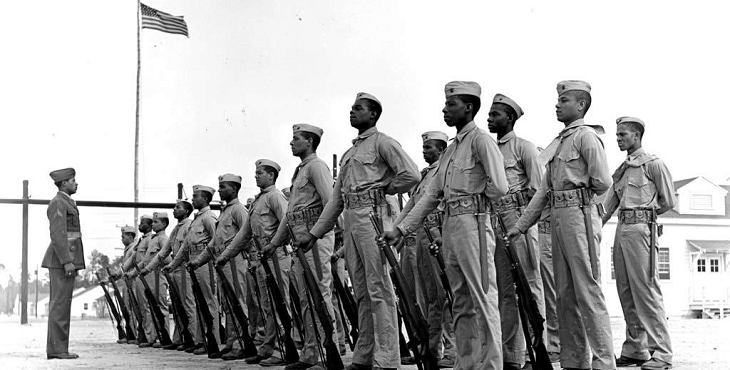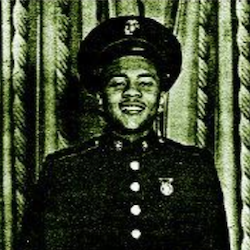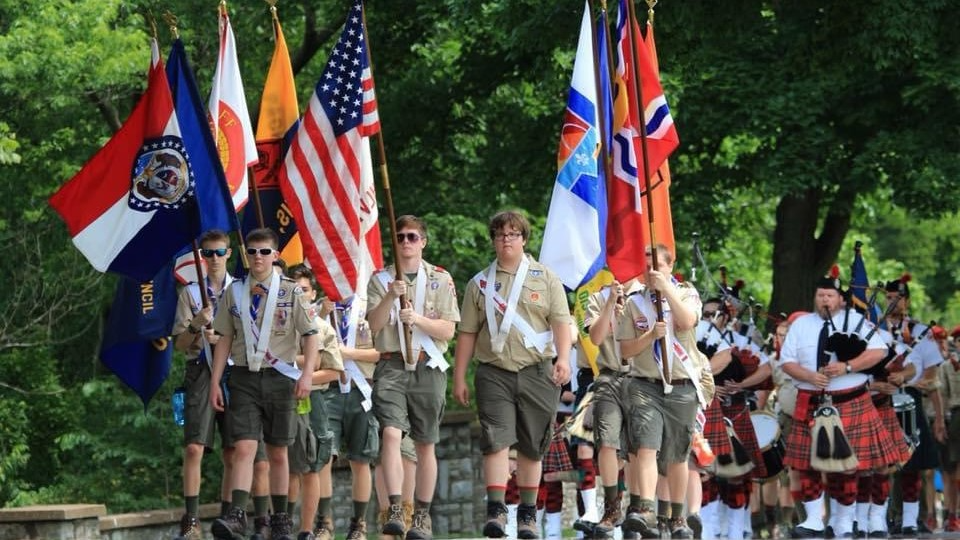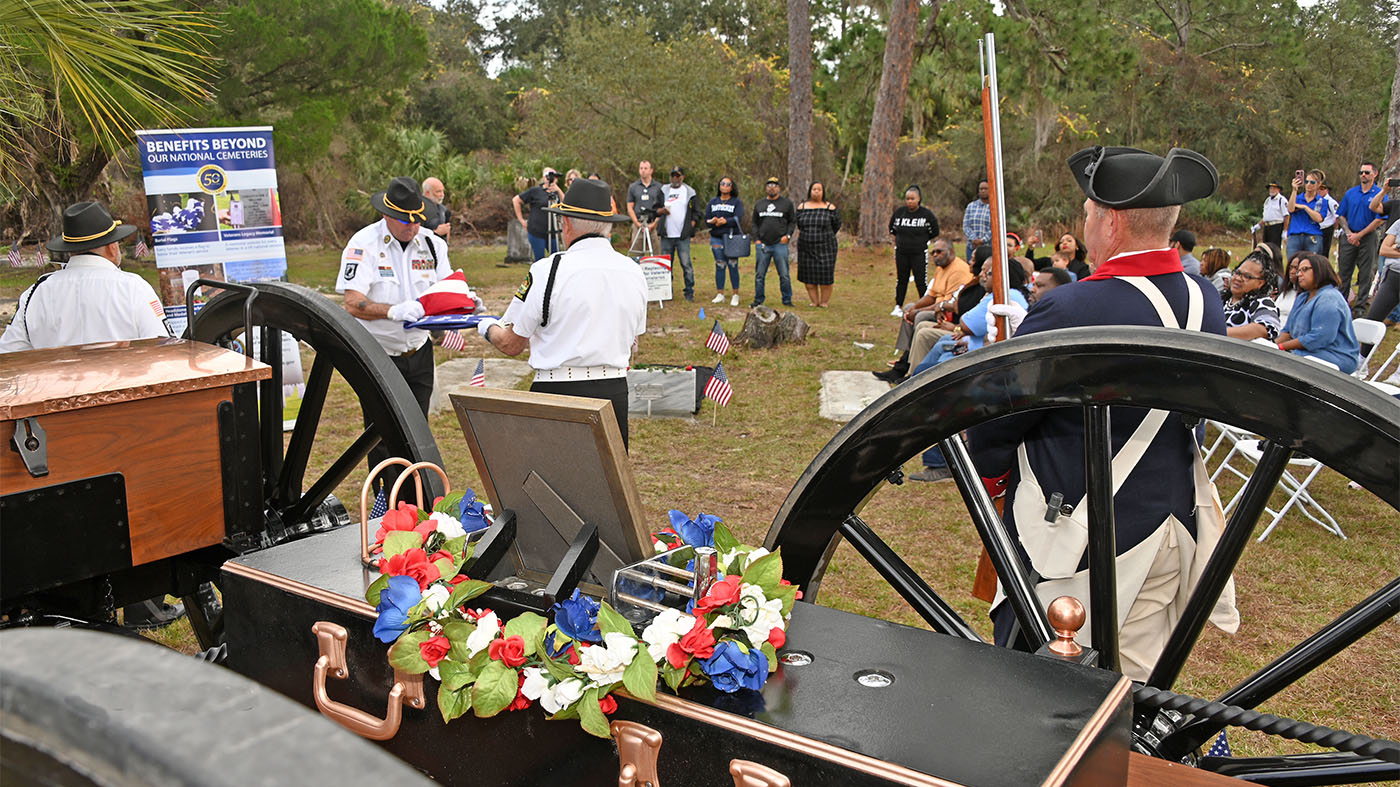Pfc. Kenneth Jewel Tibbs was a proud and excellent Marine who served in the Pacific during World War II. He was part of the group known as the Montford Point Marines, named after the camp where all African-American Marines trained. The Montford Point Marines were the first African-American Marines since the American Revolution.
In the year leading up to the United States entering World War II, President Roosevelt issued an executive order that required the armed services to recruit African-Americans. Before this point, the Marine Corps barred African-Americans from enlisting.
To begin training African-American recruits, the Marine Corps opened Camp Montford Point, North Carolina. Though African-Americans could now enlist in the Marine Corps, they were still separated from white recruits. African-American recruits at the camp faced racial discrimination both on and off duty. Despite these challenges, the Montford Point Marines served with pride, and were willing to fight a war abroad when they did not yet have civil rights at home.
Before enlisting in the Marine Corps, Tibbs held a number of different jobs in order to help support his mother and six siblings. When he enlisted in October 1943, his girlfriend was pregnant with their child. Tibbs continued to support his family by sending portions of his paycheck back home.
Tibbs excelled in the Marine Corps as a young recruit. He consistently earned highest marks on evaluations. When he completed basic training, he joined the 20th Marine Corps Depot Company as the commander’s steward.
In February 1944, Tibbs began the long journey to the Pacific. He boarded the USS James O’Hara in Virginia and arrived in Hawaii three weeks later. He spent a short time in Hawaii until finally departing for Saipan in May.
The Battle of Saipan began on June 15, 1944. After days of heavy naval bombardment, U.S. Marines began landing on the beaches of the island. During these landings, African-American Marines saw combat for the first time in World War II.
Heavy fighting ensued on the beaches. With enemies threatening to push back American lines that secured the beachhead, members of the Marine depot companies reinforced them as infantry. Tibbs, who had desired to serve in the infantry, was in one of those depot companies. With their help, the Marines were able to repel the enemy’s advance. By the end, the battle claimed the lives of more than 3,000 Americans.
Tibbs was among those killed during the battle. He died shortly after landing on Yellow Beach #2, and was the first Montford Point Marine killed in action. It took another two months for his family to learn of his death. During that time, Tibbs’s girlfriend gave birth to his daughter, Helen. She would never get the chance to meet her father.
Today, Tibbs is interred at National Memorial Cemetery of the Pacific in Honolulu, Hawaii. His service and sacrifice paved the way for African-American service members for generations to come, and ushered in a new era of African-American history.
Greta Bartley-Hamilton, Assistant Director of Riverside National Cemetery, discovered Tibbs’s story last year during NCA’s sponsorship of the Understanding Sacrifice program. Since 2014, Understanding Sacrifice has selected 54 teachers to research fallen heroes and bring new lessons on World War II into classrooms. Last year, they conducted research on 18 service members buried at Golden Gate and San Francisco National Cemeteries, and National Memorial Cemetery of the Pacific. Their stories and the lessons plans based upon their service are now accessible to the public and other educators.
Understanding Sacrifice is an educational program by the American Battle Monuments Commission and National Cemetery Administration in partnership with National History Day and the Roy Rosenzweig Center for History and New Media at George Mason University. To learn more about the Understanding Sacrifice program visit https://abmceducation.org/
To learn more about the Veterans Legacy Program and their other partnerships, visit https://www.cem.va.gov/legacy/
Please join us in recognizing the legacy of Pfc. Kenneth Jewel Tibbs. You can read his biography, hear his eulogy, and view the lesson plans developed around his legacy here: https://abmceducation.org/understandingsacrifice/soldier/kenneth-tibbs
Topics in this story
More Stories
This year marked the 75th year of the 2024 Gravois Trail Memorial Day Good Turn Boy Scout flag placing at every gravesite at Jefferson Barracks National Cemetery.
NCA's Cemetery Restoration Project educates communities about private cemetery owners and the caretakers who honor and memorialize Veterans buried without headstones. The restoration project also restores these private resting places to reflect the dignity and honor these Veterans deserve for their service and sacrifice to our nation.
Rubber Tramp Rendezvous is held annually in January, and it provides an opportunity for those who live a mobile lifestyle—in vehicles such as vans, RVs, and buses—to learn more about the benefits and support available to them.










RIP Brother
Thank you…